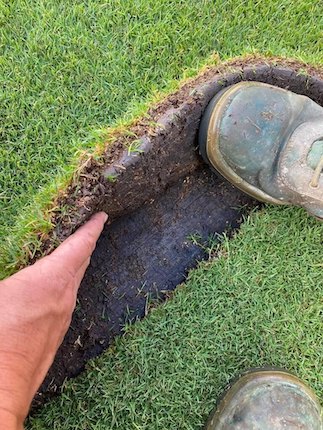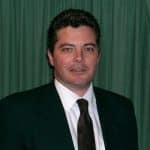Does the fungicide you use increase thatch in turf?
Turf managers and lawn owners are in a constant battle to stop the build-up of thatch in turf. Too much thatch is associated with a soft, spongy disease prone surface. Many intensive maintenance practices will encourage thatch and make management even more difficult.
We like to think that part of our ongoing research into soil wetting agents will help better manage thatch.
For lawn thatch to break down, you must have a healthy and viable microbial population. Fungi play an important role in the break-down of thatch in turf. Some scientists have investigated whether turf fungicides result in a build-up of thatch. At least four separate research programs have looked at this subject (Cornell University, The University of Maryland, Oregon State University and Rutgers University, as well as the UK). Their findings are below:
Summary
- Several fungicides increase thatch under certain conditions. These include iprodione, mancozeb and thiram or TMTD.
- In a highly maintained site, turf management is at its most intense. So this is when there is the greatest potential for thatch to build-up due to high fertility, frequent irrigation, and frequent fungicide use.
- Fungicides promote thatch, as they increase root growth and the production of rhizomes.
- In sites with moderate management (moderate fertility and irrigation, regular aeration, and moderate fungicide use), most fungicides do not promote thatch. This includes those that promote thatch in intensively managed sites.
- If you adopt a preventative fungicide program, this can result in a build-up of thatch if you use the wrong product.
- Certain insecticides that people use for earthworms indirectly affect thatch build-up. Group 1 fungicides such as Vorlon fungicide, are also highly toxic to earthworms.
In conclusion, if you use a fungicide do so in moderation. Also, attempt to use more selective fungicides against beneficial soil organisms.
Because a fungicide combination product contains one active that is safe to beneficials, also check the impact of the other actives.
The key to a healthy disease free turf is adopting a good maintenance program. The basis of this should be meeting the turf’s nutritional and growth requirements.


Jerry Spencer
Jerry has an Hons Degree in Soil Science (1988) from Newcastle Upon Tyne University. He then worked as a turf agronomist for the Sports Turf Research Institute (STRI) until 1993.
He gained a Grad Dip in Business Management from UTS in 1999. He has held a number of technical roles for companies such as Arthur Yates (Commercial Technical Manager) and Paton Fertilizers (Organic, turf specialty and controlled release fertiliser) portfolios.
In 2013 he established Gilba Solutions as independent sports turf consultants and turf agronomists. Jerry has written over 100 articles and two books on a wide range of topics such as Turf Pesticides and turfgrass Nutrition which have been published in Australia and overseas.
